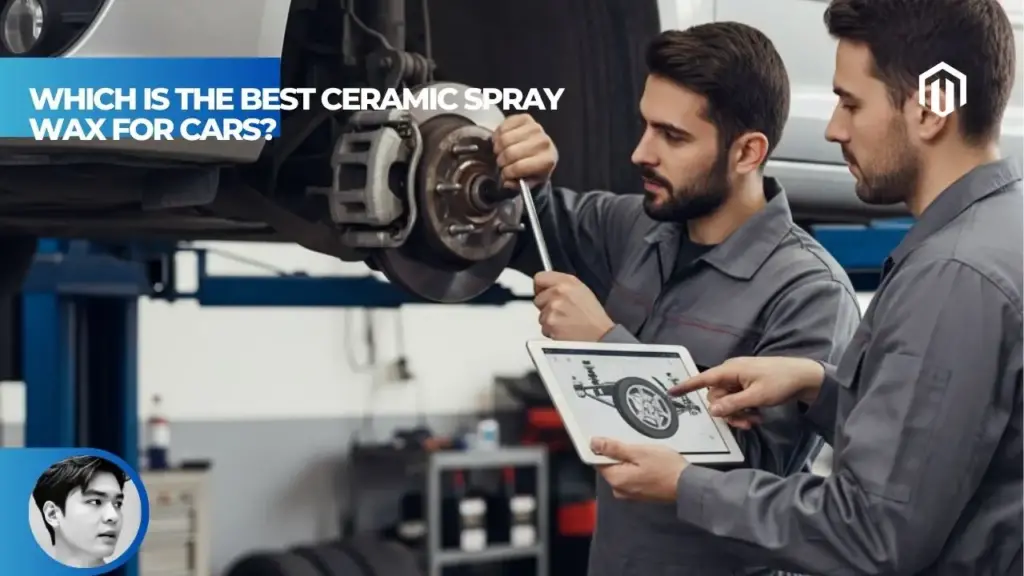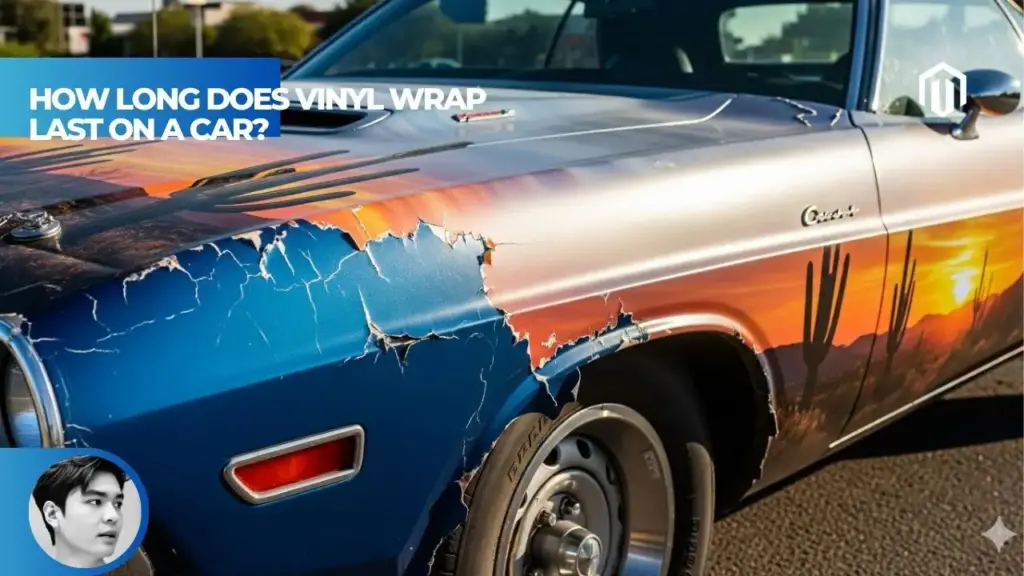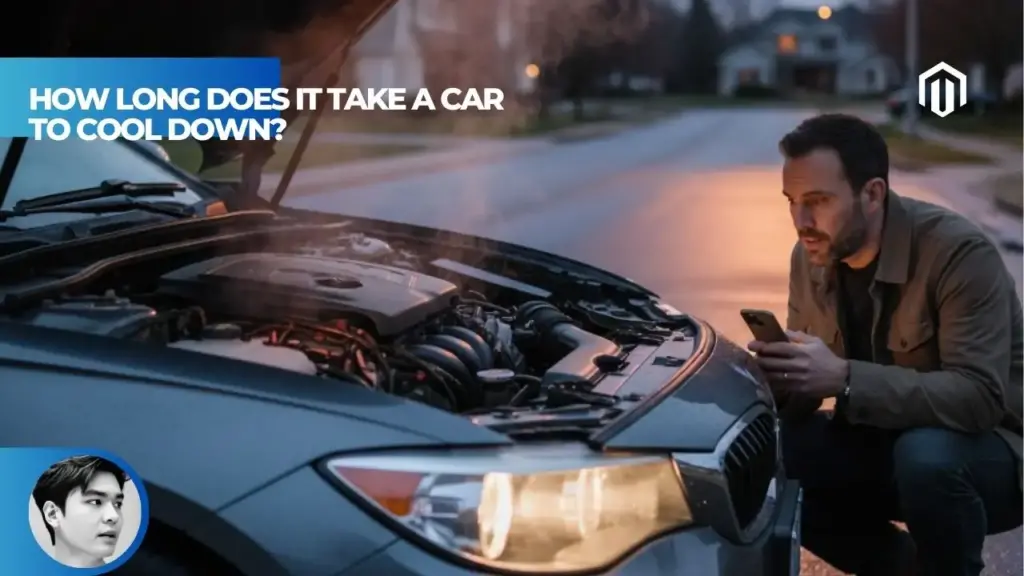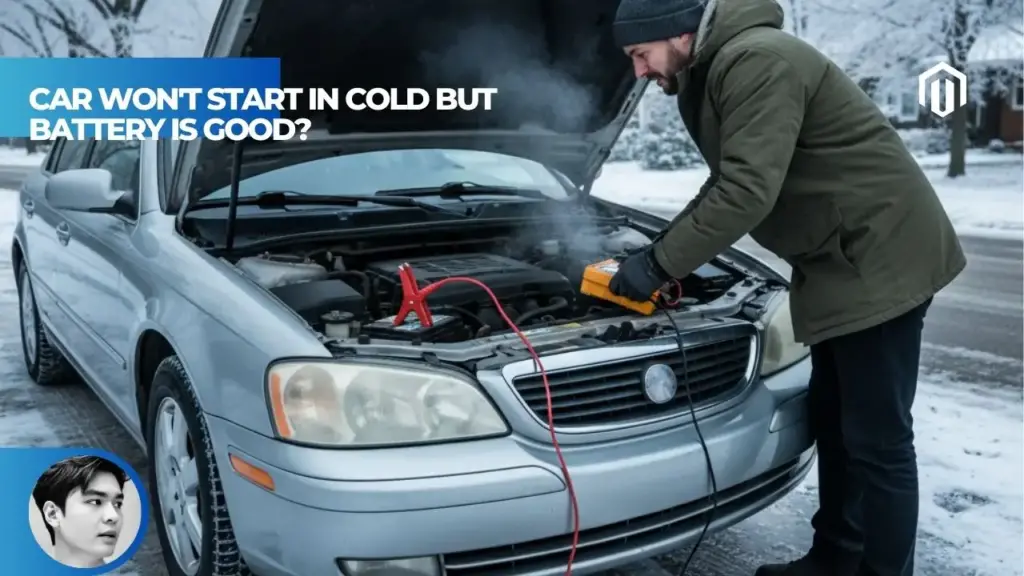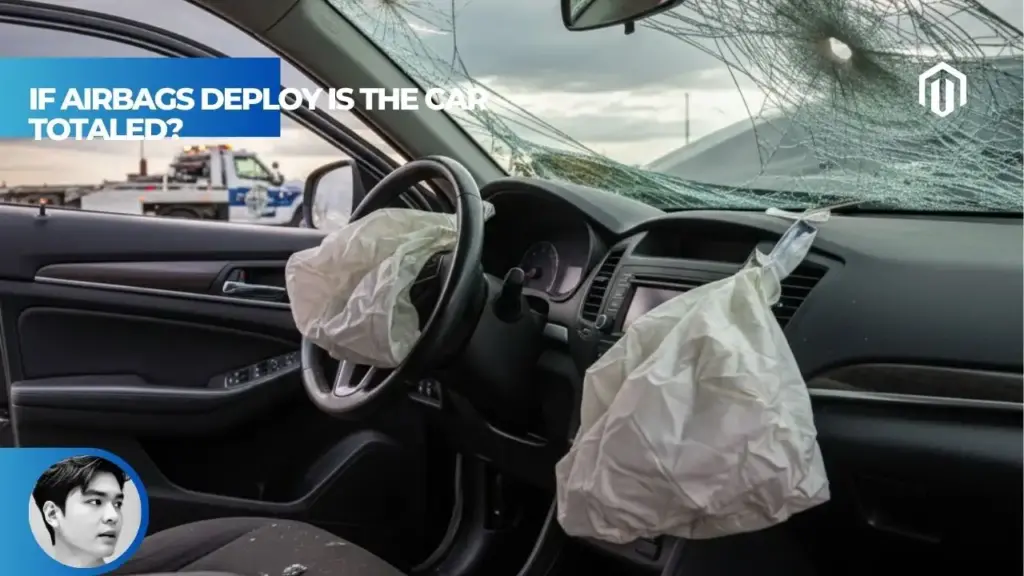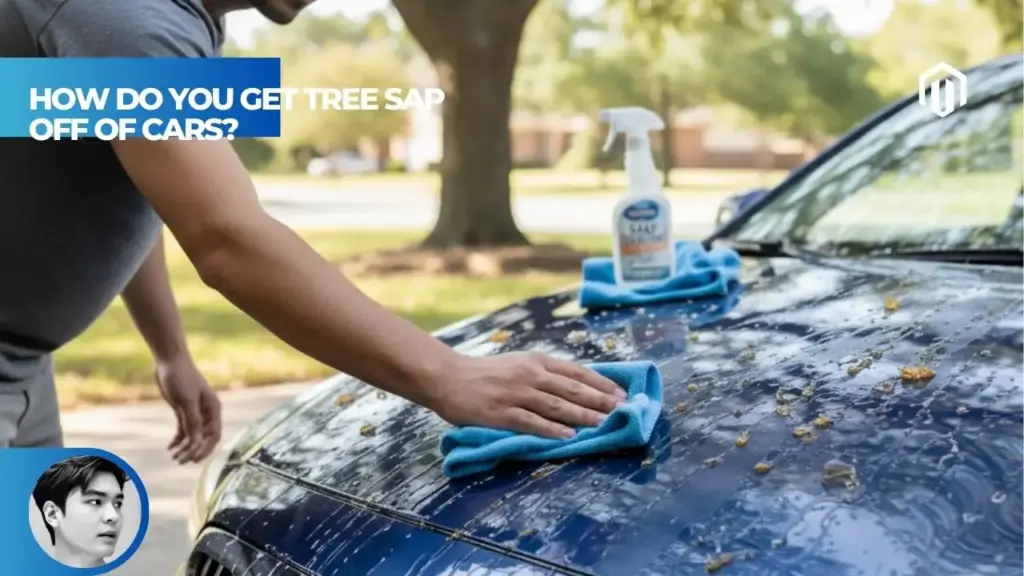You may also like:
- 【Explained】How Much Power Steering Fluid Does a Car Need? (Capacity for Top-Off vs. Flush)
- 【Explained】How Long Does It Take to Align a Car? (The 30-Minute to 1-Hour Guide)
- 【Explained】How Can You Tell If Your Car Is Overheating? A Quick Guide to Spotting the First Signs
- 【Explained】When Does the 2-Hour Car Seat Rule End for Babies?
- 【Explained】How to Fix Car AC Blowing Hot Air? DIY Troubleshooting Guide
A noise when turning typically indicates issues with your power steering system (whining/squealing), CV joints (clicking), suspension components (clunking/creaking), wheel bearings (grinding), or brake/tire problems (rubbing/squealing). These sounds often signal problems requiring immediate attention, as some failures—particularly with ball joints or tie rods—can lead to complete loss of steering control.
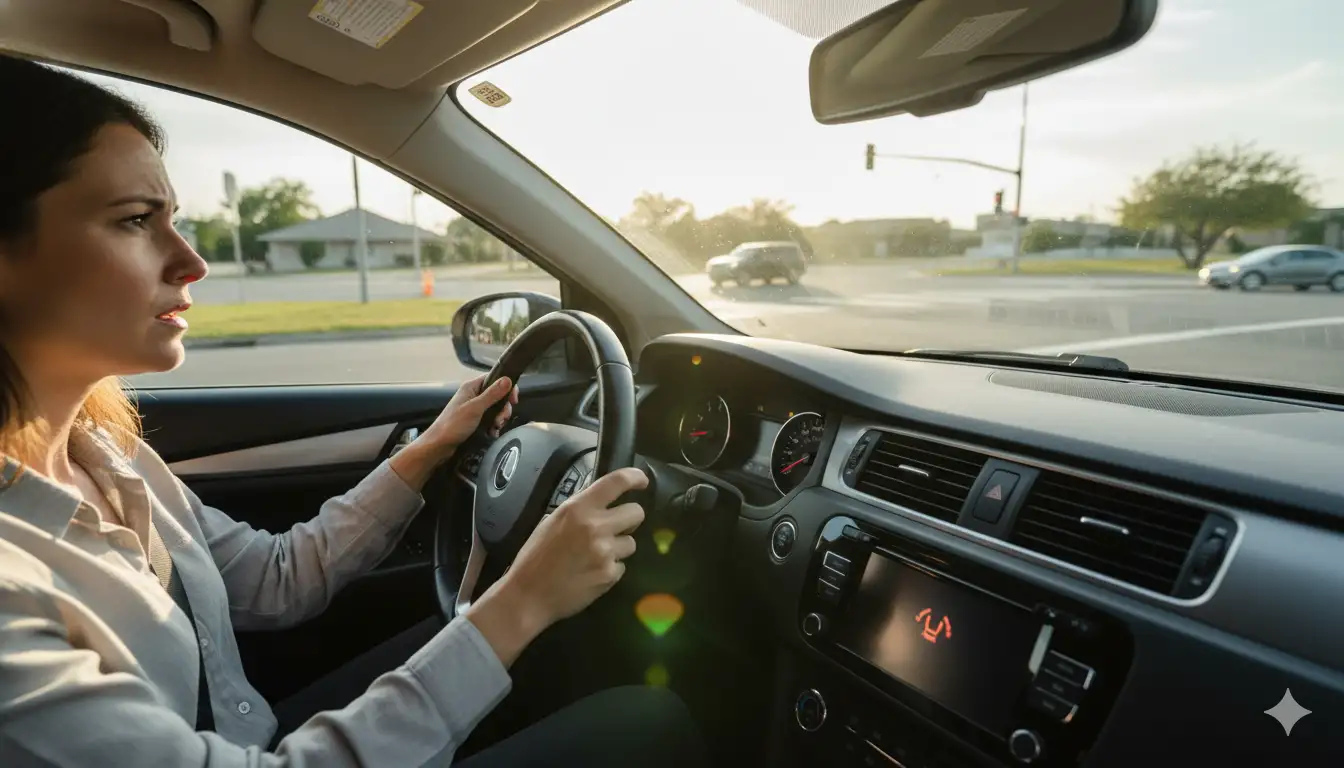
Common Types of Noise When Turning and Their Meanings
Understanding the specific sound your car makes when turning is the first step in diagnosing the problem. Each noise has distinct characteristics that point to different components. According to Autvex automotive experts, recognizing these sounds early can save thousands in repair costs and prevent dangerous failures on the road.
Squealing Noise When Turning Steering Wheel
A high-pitched squealing when turning typically indicates power steering belt issues or low fluid levels. This sound often intensifies when turning the wheel to full lock, especially during parking maneuvers. The noise results from the belt slipping on the pulley or air bubbles in the hydraulic system creating cavitation[1].
The squealing may be accompanied by increased steering effort. In cold weather, the sound might disappear once the engine warms up, as fluids become less viscous. However, persistent squealing requires immediate attention to prevent power steering pump damage.
Clunking Noise When Turning at Low Speed
A metallic clunking sound during low-speed turns usually points to worn suspension components. This noise often occurs when pulling into driveways or navigating parking lots. The sound resembles metal hitting metal and may be felt through the steering wheel as well as heard.
| Component | Sound Characteristics | Most Common At |
|---|---|---|
| Ball Joints | Deep clunk or pop | Sharp turns, bumps |
| Tie Rod Ends | Knock or clunk | Any turning angle |
| Sway Bar Links | Rattle or clunk | Over bumps while turning |
| Control Arm Bushings | Thud or clunk | Acceleration while turning |
Grinding Noise When Turning Wheels
Grinding sounds indicate metal-on-metal contact, often from failing wheel bearings or brake components. The noise typically worsens with speed and may change pitch when turning in different directions. A grinding noise that intensifies when turning right suggests a problem with the left wheel bearing, as weight transfers to the opposite side during turns[2].
This sound requires immediate investigation, as wheel bearing failure can cause wheel separation at highway speeds. If you’re experiencing grinding noises, avoid high-speed driving until the issue is diagnosed.
Popping Sound When Turning Left or Right
Rhythmic popping or clicking that matches wheel rotation speed almost always indicates CV joint failure. The sound becomes more pronounced during tight turns and may disappear when driving straight. Front-wheel-drive vehicles are particularly susceptible to this issue due to the constant angle changes in the CV joints during operation.
The popping typically starts subtly but progressively worsens over weeks or months. Once you hear this sound, CV joint replacement becomes inevitable—continuing to drive risks complete joint separation.
Whining Noise When Turning at Full Lock
A whining or groaning noise at full steering lock indicates power steering pump strain. This sound occurs when the pump reaches maximum pressure, often due to low fluid levels or internal pump wear. The noise resembles an electric motor under load and may be accompanied by steering wheel vibration.
Modern vehicles with electric power steering may produce different sounds, but hydraulic systems are particularly prone to this issue when maintenance schedules aren’t followed.
Cause #1: Power Steering System Problems
Power steering issues account for approximately 40% of turning noises reported to mechanics. The system relies on hydraulic pressure to assist steering, and any disruption creates distinctive sounds that worsen over time.
Low Power Steering Fluid Symptoms
Low fluid is the most common power steering problem, affecting millions of vehicles annually. When fluid drops below the minimum level, air enters the system, creating a characteristic whining that increases with engine RPM. The reservoir typically sits near the engine’s front, marked with a steering wheel symbol[3].
Warning signs of low power steering fluid include:
- Whining noise that changes with engine speed
- Difficulty turning at low speeds
- Foaming or bubbling fluid in the reservoir
- Dark or burnt-smelling fluid indicating contamination
- Steering wheel vibration during turns
A simple fluid top-off costs $20-30 but can prevent pump replacement costing $400-800.
Power Steering Pump Failure Signs
When the pump begins failing, it produces a continuous groaning that differs from low fluid whining. The pump contains vanes that wear over time, reducing pressure output. This wear accelerates if the system runs low on fluid repeatedly.
Failed pumps exhibit progressively worsening symptoms over 2-3 months. The steering becomes increasingly heavy, especially at idle. You might notice fluid leaks around the pump housing or drive belt area. According to recent BMW service bulletins, luxury vehicles often require OEM pumps for proper operation.
Bad Power Steering Belt Squeal
The serpentine or V-belt driving the power steering pump can slip when worn or contaminated. Belt squealing differs from pump noise—it’s higher pitched and often stops momentarily when spraying water on the belt. A glazed belt surface prevents proper grip, especially under the high load of turning maneuvers.
Belt replacement costs $75-150 including labor, making it one of the most economical steering noise repairs. However, ignoring belt issues can damage the pump through inadequate rotation speed.
Groaning Noise When Turning Steering Wheel Stationary
Groaning while stationary indicates excessive system pressure or restriction. This often occurs in older vehicles where the pressure relief valve sticks, forcing the pump to work against maximum resistance. The sound resembles a foghorn and may cause the engine to bog down slightly.
This condition rapidly damages pump internals and can burst high-pressure hoses. Immediate diagnosis prevents costlier cascading failures throughout the power steering system.
Cause #2: Failing CV Joints and Drivetrain Issues
CV (Constant Velocity) joints allow front wheels to receive power while steering and moving over bumps. These joints contain precision-machined balls in grooved races, protected by rubber boots filled with grease. When boots tear, contamination enters, accelerating wear dramatically.
Bad CV Joint Clicking Noise When Turning
The classic CV joint failure produces a rapid clicking or popping during turns. The sound’s frequency increases with wheel speed, creating a machine-gun-like rhythm during tight parking maneuvers. Inner CV joints may click during straight-line acceleration, while outer joints click primarily when turning[4].
CV joint replacement averages $300-400 per axle, including parts and labor. Most mechanics replace the entire axle shaft rather than rebuilding individual joints, as the labor cost difference is minimal. Continuing to drive with clicking CV joints risks complete failure, leaving you stranded when the joint separates.
Difference Between Power Steering Noise and CV Joint Noise
Distinguishing these sounds prevents misdiagnosis and unnecessary repairs. Power steering noise remains constant regardless of vehicle speed, changing only with steering input. CV joint noise directly correlates with wheel rotation speed, silent when stationary.
| Characteristic | Power Steering Noise | CV Joint Noise |
|---|---|---|
| When Heard | Any speed, including stationary | Only when moving |
| Sound Type | Whine, groan, squeal | Click, pop, knock |
| Frequency | Constant or varies with RPM | Matches wheel speed |
| Affected by | Steering angle, fluid level | Vehicle speed, turn radius |
| Location | Engine compartment | Wheel area |
Viscous Coupling Failure AWD Turning Noise
All-wheel-drive vehicles use viscous couplings to distribute power between axles. When these fail, they create binding during turns, producing a groaning or grinding noise. The sound differs from CV joints—it’s lower frequency and often accompanied by drivetrain shudder.
This issue particularly affects older Subaru, Audi, and BMW X3 models with over 100,000 miles. Viscous coupling replacement costs $800-1,500, making it one of the more expensive turning noise repairs.
Cause #3: Worn Suspension Components
Suspension components endure constant stress from road impacts and steering forces. These parts typically last 50,000-100,000 miles but deteriorate faster on rough roads or with aggressive driving. Autvex testing shows that suspension noises often develop gradually, making them easy to overlook until failure becomes imminent.
Worn Ball Joints Creaking When Turning
Ball joints act as pivot points between the suspension and wheels, allowing multi-directional movement. When the protective boot tears or the grease dries out, metal-on-metal contact creates a distinctive creaking or popping sound. Lower ball joints typically fail first due to carrying more vehicle weight[5].
The creaking often starts intermittently but becomes constant within weeks. Severely worn ball joints can separate catastrophically, causing complete loss of wheel control. Replacement costs range from $250-700 per joint, depending on vehicle design and whether upper and lower joints need replacement.
Bad Tie Rod Ends Clunking
Tie rods connect the steering rack to the wheel knuckles, translating steering input into wheel movement. Worn tie rod ends develop play in the ball socket, creating a clunking sound during directional changes. The noise often accompanies steering wheel vibration and wandering on highways.
Tie rod replacement costs $150-450 per side, including necessary wheel alignment. Most mechanics recommend replacing both sides simultaneously, as they wear at similar rates. Delayed replacement causes uneven tire wear costing hundreds in premature tire replacement.
Worn Strut Mount Bearing Noise
The strut mount contains a bearing that allows the strut assembly to rotate with steering input. When this bearing fails, it creates a spring-like creaking or popping during slow-speed turns. The sound originates from the top of the wheel well, distinguishing it from lower suspension noises.
Common symptoms include:
- Creaking when turning the steering wheel while parked
- Popping sound when transitioning from forward to reverse
- Increased noise in cold weather
- Steering returning slowly to center
Strut mount replacement typically costs $200-400 per corner, often performed during strut replacement to save labor costs.
Loose Stabilizer Bar Links
Stabilizer (sway) bar links connect the anti-roll bar to the suspension, reducing body lean during turns. Worn link bushings or ball joints create a rattling or clunking over bumps, especially during simultaneous turning and suspension movement.
Link replacement is relatively inexpensive at $75-150 per side, making it a common first repair for suspension noises. However, misdiagnosis is common, as the sound mimics other suspension problems. Professional diagnosis using a suspension inspection during alignment helps identify the actual culprit.
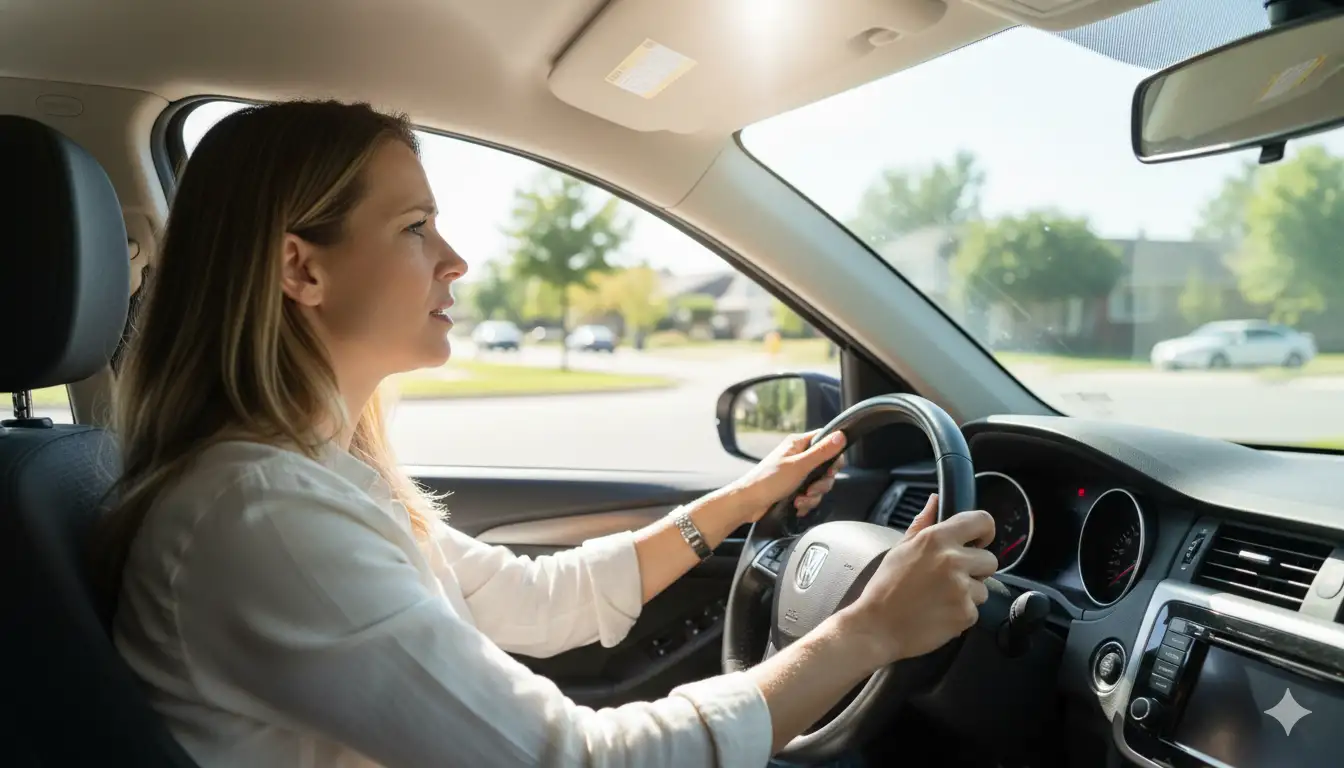
Cause #4: Wheel Bearing and Hub Problems
Wheel bearings enable smooth wheel rotation while supporting vehicle weight. Modern sealed bearings typically last 85,000-100,000 miles, but contamination or impact damage causes premature failure. The progression from slight noise to complete failure can occur within weeks once symptoms begin.
Failing Wheel Bearing Noise When Turning
Bad wheel bearings produce a humming or grinding that changes with vehicle speed. The sound intensifies when turning away from the affected bearing, as weight transfers onto it. For example, a left turn loads the right bearing, amplifying any noise from that side[6].
Early-stage bearing wear creates a barely audible drone at highway speeds. As wear progresses, the noise becomes a grinding that’s audible at all speeds. Advanced failure causes wheel wobble, excessive heat, and potential wheel separation.
Bearing replacement costs vary significantly:
- Standard bearings: $250-500 per wheel
- Hub assembly replacement: $350-700 per wheel
- Luxury vehicles: $700-1,100 per wheel
Does a Bad Wheel Bearing Make Noise Only When Turning?
While turning amplifies bearing noise, advanced wear produces constant sound regardless of steering input. The misconception that bearings only make noise when turning leads to delayed diagnosis. Early detection during routine pre-purchase inspections can identify bearing wear before it becomes critical.
Testing involves raising the vehicle and checking for play by rocking the wheel. Any movement indicates bearing wear requiring immediate attention. Modern vehicles often integrate bearings into hub assemblies, increasing replacement cost but improving reliability.
Noise When Turning Only When Car is Warm
Temperature-dependent noises indicate marginal component failure. Thermal expansion when warm can close tolerances enough to create contact and noise. This particularly affects wheel bearings and CV joints in the early failure stages.
Common temperature-related patterns:
- Cold: Stiff grease causes temporary noise that disappears when warm
- Warm: Expanded components create interference and continuous noise
- Heat cycles: Accelerated wear from repeated expansion/contraction
Document when noises occur to help mechanics diagnose intermittent problems accurately.
Cause #5: Brake and Wheel-Related Issues
Brake and wheel problems create distinctive noises during turns due to component movement and load changes. These issues range from minor annoyances to serious safety concerns requiring immediate attention.
Brake Dust Shield Rubbing When Turning
The thin metal shield behind brake rotors protects components from road debris. Minor impacts can bend these shields, causing them to contact the rotor during turns. The resulting scraping or grinding sound often varies with steering angle and may disappear when driving straight.
Shield adjustment is a simple repair costing $50-100, but ignoring it can damage rotors requiring $300-500 replacement. Visual inspection reveals bent shields, often repairable without part replacement.
Tire Rubbing Wheel Well When Turning
Oversized tires or lowered suspensions can cause tire contact with wheel wells during full-lock turns. The rubbing creates a distinct rubber-on-plastic sound, sometimes accompanied by visible wear marks on tire sidewalls or fender liners.
This issue commonly affects modified vehicles or those with:
- Aftermarket wheels with incorrect offset
- Worn suspension allowing excessive travel
- Damaged fender liners hanging into wheel path
- Snow/mud buildup in wheel wells
Resolution involves correcting tire size, adjusting suspension, or modifying wheel wells. Continued rubbing can cause tire failure or body damage.
Low Tire Pressure Squealing When Turning
Underinflated tires create excessive sidewall flex during turns, producing a squealing or chirping sound. The noise results from the tire tread sliding rather than rolling through the turn. Low pressure also causes premature edge wear, reducing tire life by up to 25%[7].
Proper inflation according to the door placard specification eliminates this noise immediately. Regular pressure checks, especially during temperature changes, prevent both noise and premature wear. Consider upgrading to XL-rated tires if frequently carrying heavy loads.
Loose Lug Nuts Noise When Turning
Improperly torqued lug nuts allow wheel movement, creating a knocking or clicking that worsens during turns. This dangerous condition can lead to wheel separation without warning. The noise often develops days or weeks after tire service if proper torque procedures weren’t followed.
Warning signs include:
- Rhythmic clicking matching wheel speed
- Vibration through the steering wheel
- Visible rust streaks from lug nut movement
- Wheel wobble during braking
Immediately stop driving if you suspect loose lug nuts. Retorquing costs nothing if caught early, but damaged studs require $100-200 per wheel to repair.
How to Diagnose Car Noise When Turning
Accurate diagnosis saves money by avoiding unnecessary repairs and preventing component failure. Professional mechanics use specific tests, but car owners can perform initial assessments to identify likely causes.
Is It Safe to Drive With a Clunking Noise When Turning?
The safety of continuing to drive depends entirely on the noise source. Power steering whines rarely pose immediate danger, while ball joint clunking can precede catastrophic failure within miles. According to NHTSA data, suspension-related failures cause approximately 2,200 accidents annually[8].
Immediate stop conditions:
- Grinding with steering difficulty (bearing failure imminent)
- Loud clunking with steering play (ball joint/tie rod critical)
- Metal-on-metal grinding (brake failure possible)
- Wheel wobble with noise (lug nut or bearing emergency)
Less critical but schedule repair soon:
- Power steering whine (system damage progressing)
- CV joint clicking (failure within weeks/months)
- Squealing belts (pump damage possible)
Testing Methods for Each Component
Professional diagnosis uses specific procedures to isolate noise sources:
- Power Steering Test: With engine running, turn wheel lock-to-lock while stationary. Whining indicates fluid issues; groaning suggests pump problems. Check fluid color—red is good, brown indicates contamination.
- CV Joint Test: Drive in tight circles in an empty parking lot. Clicking that increases with speed confirms CV joint wear. Note whether noise occurs turning left, right, or both directions.
- Suspension Test: Have assistant turn wheel while you observe components. Look for movement in ball joints, tie rod ends. Listen with a mechanic’s stethoscope to isolate noises.
- Wheel Bearing Test: Jack up vehicle, grasp wheel at 12 and 6 o’clock positions. Rock wheel—any play indicates bearing wear. Spin wheel listening for grinding.
- Brake Inspection: Remove wheel to check dust shield position. Look for shiny spots indicating contact. Check pad thickness and rotor condition.
When to Seek Professional Help
Certain symptoms require professional diagnosis equipment and expertise. Modern vehicles integrate multiple systems, making noise sources difficult to isolate. Computerized alignment machines can detect worn components not visible during visual inspection.
Seek immediate professional help for:
- Noises accompanied by warning lights
- Multiple simultaneous sounds
- Intermittent noises difficult to reproduce
- Any noise affecting vehicle control
- Sounds after recent repair work
Professional diagnosis typically costs $100-150 but prevents expensive misdiagnosis. Many shops waive diagnostic fees if you proceed with repairs. According to Autvex service data, proper diagnosis prevents unnecessary repairs in 35% of noise complaints.
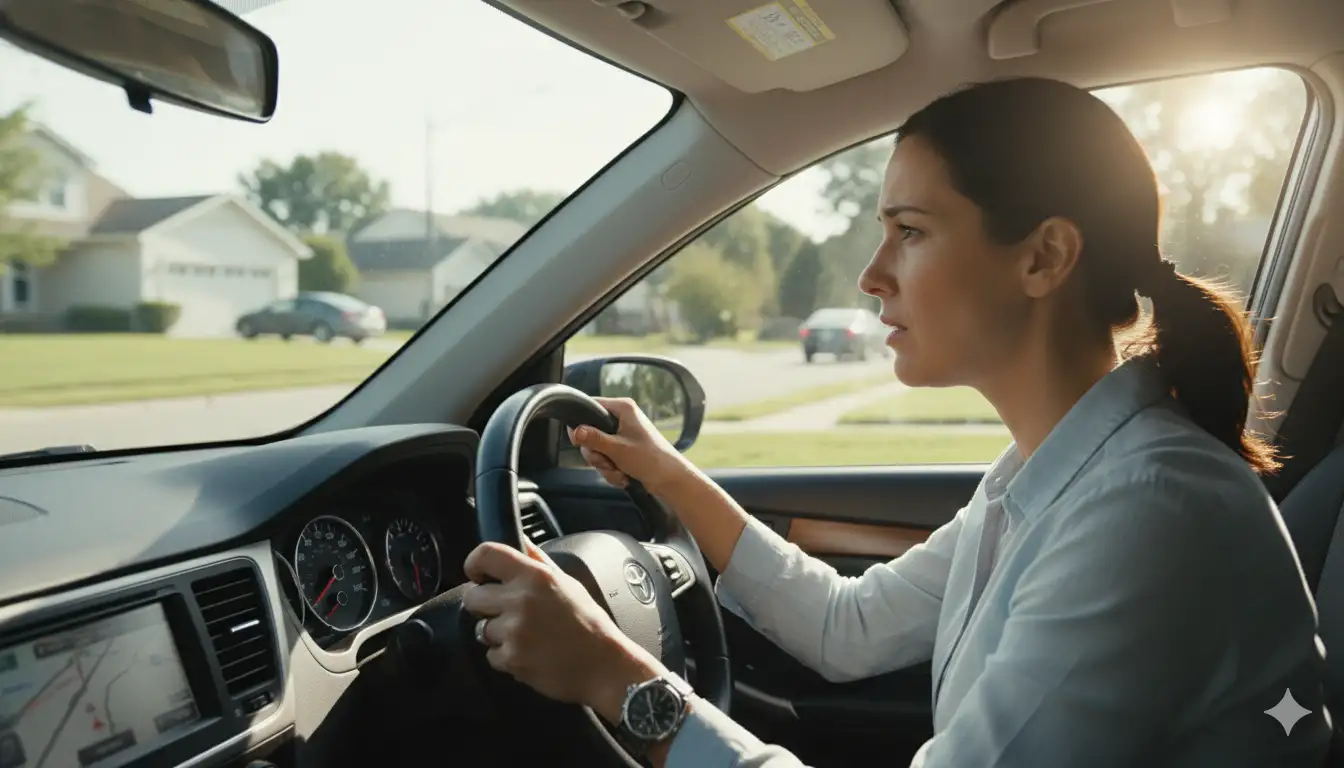
Key Takeaways
- Power steering problems cause whining/groaning and typically cost $20-800 to fix
- CV joint failure produces clicking during turns and costs $300-400 per axle
- Ball joint separation can occur suddenly—repair immediately when hearing clunks ($250-700)
- Wheel bearing grinding indicates imminent failure requiring $250-1,100 replacement
- Temperature-dependent noises suggest early-stage wear needing prompt attention
- Document sound patterns (speed, direction, temperature) for accurate diagnosis
- Safety-critical noises include grinding with difficulty steering or wheel wobble
A noise when turning typically indicates issues with power steering (whining/squealing), CV joints (clicking), suspension components (clunking/creaking), wheel bearings (grinding/humming), or brake/tire problems. Immediate diagnosis is crucial as some failures like bad ball joints can cause loss of vehicle control.
Decision Path / Next Steps
After identifying your car’s turning noise, follow this action plan based on severity:
- For Immediate Safety Concerns (grinding, severe clunking, wheel wobble): Stop driving immediately and have the vehicle towed to a repair shop. These symptoms indicate imminent component failure that could cause loss of control. Contact your insurance company if you have roadside assistance coverage.
- For Progressive Wear Sounds (clicking CV joints, whining power steering): Schedule service within 1-2 weeks while avoiding aggressive driving. Get quotes from 2-3 shops as prices vary significantly. Consider aftermarket parts for older vehicles to reduce costs by 30-50%.
- For Minor Annoyances (squealing belts, tire rubbing):
Address at your next scheduled maintenance to prevent escalation. These repairs are often inexpensive if caught early. DIY-capable owners can save labor costs on belt replacement or tire pressure adjustment. - For Intermittent or Unclear Noises: Keep a log noting when sounds occur, including weather conditions and driving circumstances. Record audio/video if possible to show mechanics. Consider having a trusted shop perform a comprehensive safety inspection to identify developing issues.
- Prevention Strategy: Follow manufacturer maintenance schedules for fluid changes and component inspections. Address minor noises promptly before they become expensive failures. Budget $500-1,000 annually for suspension/steering maintenance on vehicles over 75,000 miles.
Check your power steering fluid level first, note the specific sound type and when it occurs (speed, direction, temperature), then have a mechanic inspect the vehicle immediately if the noise is accompanied by steering difficulty or vibration. For vehicles still under warranty, document all symptoms before visiting the dealer. Consider getting a pre-purchase inspection that includes suspension evaluation when buying used vehicles.
FAQs
What is the most common reason for a car to make a noise when turning?
Low power steering fluid is the most common cause, creating whining or squealing sounds. CV joint failure (clicking) and worn suspension components (clunking) are also frequent culprits.
Why does my car make a clicking noise when I turn left or right?
Clicking during turns typically indicates a worn CV joint. The rubber boot may be torn, allowing debris to damage the joint, especially noticeable during tight turns.
Is a squealing noise when turning a sign of low power steering fluid?
Yes, squealing or whining when turning often indicates low power steering fluid. Check the reservoir and top off if needed, using the manufacturer-recommended fluid type.
What does a bad CV joint sound like when turning?
A failing CV joint produces a rhythmic clicking or popping sound during turns, especially at low speeds. The noise increases with tighter turning angles.
Why is my steering wheel making a creaking noise at low speeds?
Creaking at low speeds usually indicates worn ball joints or dry suspension bushings. These components lose lubrication over time and require inspection.
Does a bad wheel bearing make a noise only when turning?
No, bad wheel bearings typically create constant humming that worsens when turning as weight shifts to the affected side, increasing the noise intensity.
What is the groaning sound when I turn the steering wheel while parked?
Groaning while stationary indicates power steering strain, often from low fluid, a failing pump, or excessive system pressure from turning wheels without movement.
Can a tire problem cause a noise when turning?
Yes, low tire pressure can cause squealing, uneven wear creates rubbing sounds, and improperly sized tires may contact wheel wells during turns.
How can I check if my power steering fluid is the problem?
Locate the reservoir under the hood, check fluid level against min/max marks, and inspect color (should be red, not brown/black). Low or dirty fluid needs attention.
What is the difference between a bad ball joint and a bad tie rod noise?
Ball joints create creaking or popping sounds, while tie rods produce clunking or knocking noises. Both affect steering but have distinct sound signatures.
Should I be worried if my car makes a popping noise only when reversing and turning?
Yes, this often indicates CV joint wear or suspension component issues. Have it inspected promptly as these components are critical for vehicle control.
References
- RAC. (2025). Why is my car making that noise? A guide to unusual vehicle noises. https://www.rac.co.uk/drive/advice/know-how/guide-to-unusual-vehicle-noises/
- KMT Services. (2025). Grinding Noise When Turning Steering Wheel – Causes and Solutions. https://kmtservices.co.uk/grinding-noise-when-turning-steering-wheel/
- CarParts.com. (2025). Low Power Steering Fluid: Symptoms, Causes, Plus FAQ. https://www.carparts.com/blog/low-power-steering-fluid-symptoms-causes-plus-faq/
- J.D. Power. (2023). How Much Does It Cost To Replace A CV Axle? https://www.jdpower.com/cars/shopping-guides/how-much-does-it-cost-to-replace-a-cv-axle
- Forward Auto Parts. (2025). Expert 2025 Breakdown: How Much to Replace Ball Joints. https://www.forward-autoparts.com/2025/10/11/expert-2025-breakdown-how-much-to-replace-ball-joints/
- Synchrony. (2025). How Much Does a Wheel Bearing Replacement Cost? https://www.synchrony.com/blog/automotive/wheel-bearing-replacement-cost
- Precision Automotive NY. (2025). Why Is My Car Making a Grinding Noise When I Turn? https://www.precisionautomotiveny.com/why-is-my-car-making-a-grinding-noise-when-i-turn
- NHTSA. (2025). Vehicle Safety Database – Suspension Related Incidents. https://www.nhtsa.gov/

I am a senior automotive analyst at Autvex. Expert vehicle evaluations, in-depth reviews, and objective analysis helping readers make informed automotive decisions with years of industry experience.

